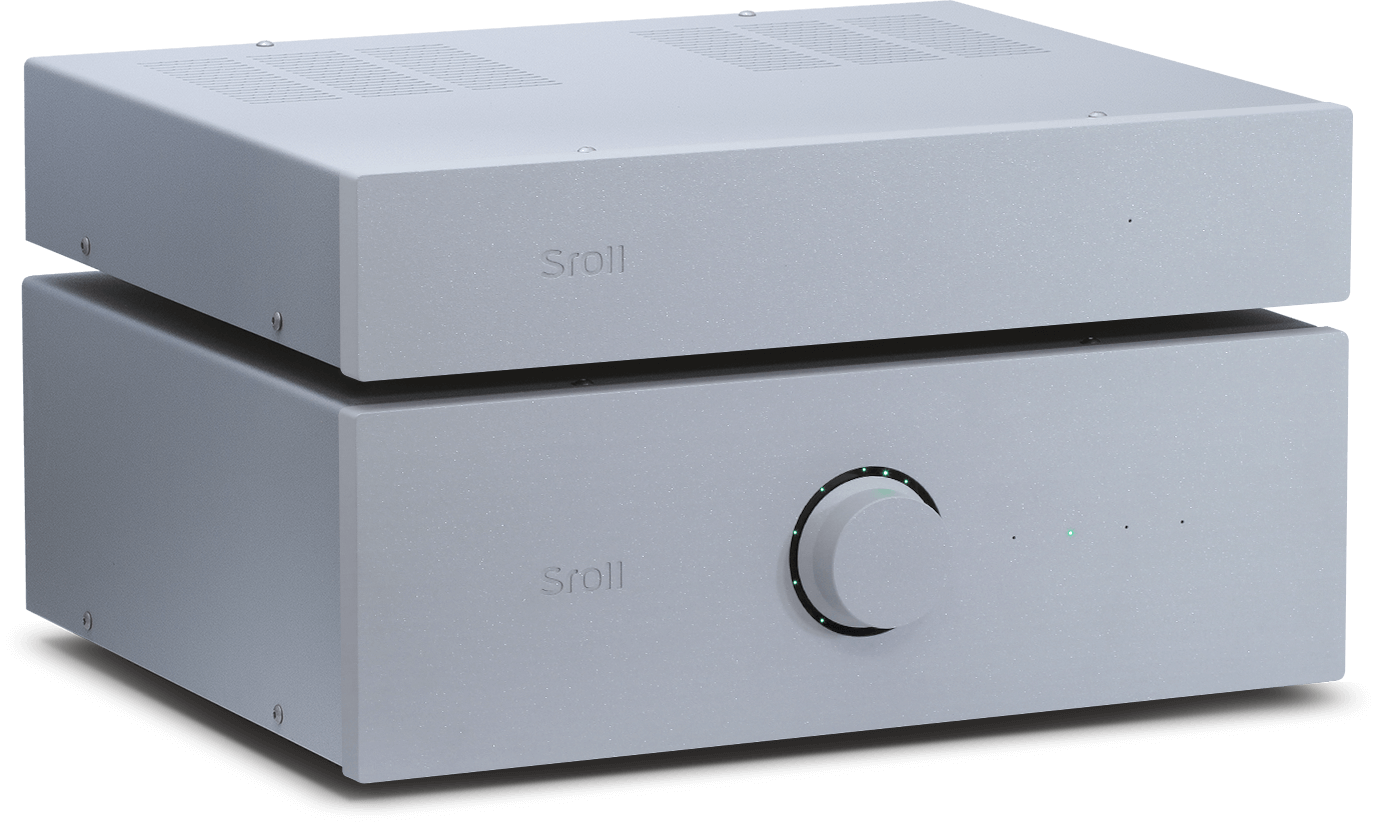Epigram
High-resolution integrated amplifier
Basic parameters
Music power 4 Ω: 2×230 W
Total harmonic distortion: 0,0002 %
Input impedance: 9,5 kΩ
Voltage gain: 34 dB
Dimensions in mm (w×h×d): 430×157×410
Weight: 21 kg
Discover music

Music power 4 Ω: 2×230 W
Total harmonic distortion: 0,0002 %
Input impedance: 9,5 kΩ
Voltage gain: 34 dB
Dimensions in mm (w×h×d): 430×157×410
Weight: 21 kg
PCM 32 Bit / 768 kHz
DSD64 ˜ DS512
Input: USB B
Output: RCA / XLR
Output impedance: 32 Ω
Total harmonic distortion: 0,0001 %
360 degrees linear sound radiation
14 drivers in each speaker
Extreme dynamics over the whole frequency range
Frequency response: 20 Hz - 36 kHz
Sensitivity: 88 dB / 2,83 V
Speaker cables
Signal cables
USB cables
Power cables
My lifetime goal has always been to design a sound system capable of delivering music faithfully, cleanly, with uncompromised dynamics, and lacking any unnatural colorations. I trust those to be the virtues of a truly high-fidelity component chain, and the only way to bring lasting emotions and unfading joy to the audiophile.
More
Over two decades ago, I have set myself on a path to solve the conundrum of truthful sound reproduction. As I was progressing with my work, I realized not only I needed to perform research in the well-known physics of audio signal processing, but also in those areas that are often marginalized, even scorned by the community. In effect, I have developed new, original audio designs that do not stem from any existing constructions. During my research, I used both top-of-the-line commercial equipment and my own technologies and apparatuses that I developed for components and materials examination and treatment.
I believe that not even the most complex and precise set of measurements can accurately describe the quality of an audio component. I therefore combine measurement with critical listening approach and tests. Sound accuracy is my sole focus. For instance, when conducting a speaker cable test, I compare if the sound of a cable is different from the no-cable sound, when the amplifier is directly connected to the speaker terminal, or if there is an audible difference between a long and a short cable. My objective is to hear only the slightest or no differences at all in such tests. The more resolving the whole system, the more conclusive the tests. This is also the reason why my research speed has been exponentially rising in the past years. The tests I perform following each construction change give me better understanding which physical properties are important for the audio signal path. I then go back to development and improve those properties in all my circuitry. The next listening session always proves an audible improvement, no exceptions over twenty years. To me, that’s a proof that this is no trial and error method but an objective, scientific approach. My years of experience with circuitry development, with tests using a high-resolution setup, and with psychoacoustics gave me the necessary insight into audio chain technical analysis. The resolving power of the system determines how far can one get with their diagnosis of newly applied solutions. My research was a long walk because I had to develop accurate audio components along with methods to determine accuracy. In return, this holistic approach gave me insight into the less understood areas of sound reproduction (such as burn-in of cables or exotic materials) that may feel as trickery or scam to many other designers who lack the methods to examine and diagnose these effects properly.
The sound of my current system is not a result of a relative harmony of individual components’ imperfections, but of the precision of each and every one of them. It is extraordinarily clean, dynamic, and rich in information. The setup doesn’t produce any distortion or ear-pleasing colorations; instead, it offers a shocking resolution that is hard to find anywhere else. You will be surprised by listening to difficult recordings, ones that you put aside for their aggressive sound on other audio systems. You’ll hear that almost all records are beautiful and even the old ones are rich in sound and make up for a great experience.
Come see and hear the quality of my products, you are warmly welcome in my studio in Náchod, Czech Republic.
Luděk Šroll / Designer
Less
Luděk Šroll
Hostovského 237, 549 31 Hronov
, Česká republika
phone: +420 603 253 975
, e-mail: sroll@sroll.com
Listening studio
Kollárova 1790, 547 01 Náchod
, Česká republika
GPS: 50.426162, 16.165863
Show on map
© 2019 Luděk Šroll,
All rights reserved